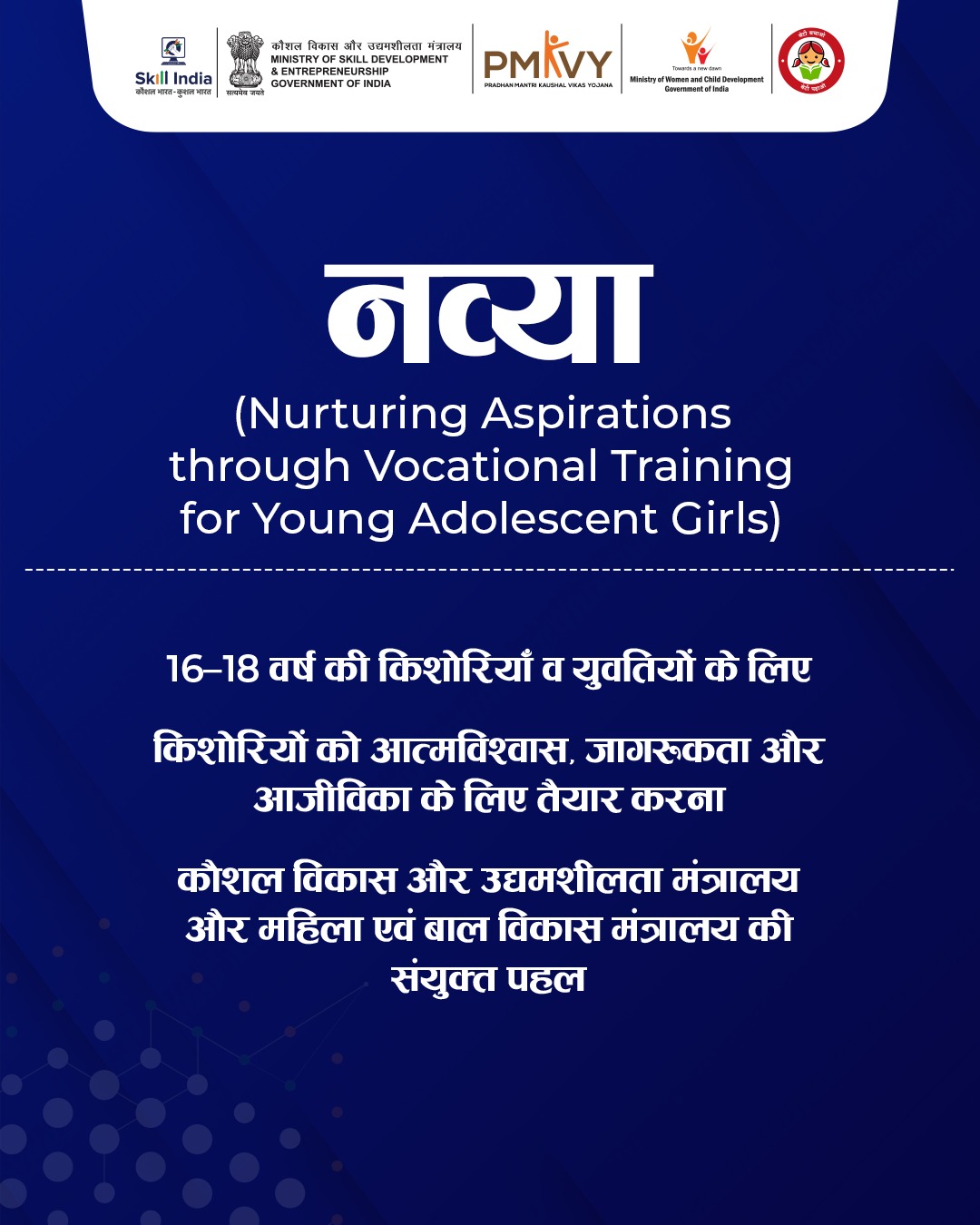Context
Recently, the Central Government launched the ‘Navya’ scheme on 24 June 2025 from Sonbhadra district in Uttar Pradesh. This scheme has been initiated as a pilot project under the Pradhan Mantri Kaushal Vikas Yojana (PMKVY), jointly operated by the Ministry of Women and Child Development and the Ministry of Skill Development and Entrepreneurship (MSDE). Its objective is to empower adolescent girls by providing training in both traditional and non-traditional sectors, making them self-reliant.
Main Objective
The full name of the ‘Navya’ scheme is Nurturing Aspirations through Vocational Training for Young Adolescent Girls. The aim is to provide modern and desirable skills to girls aged between 16 to 18 years, who have passed at least the 10th standard, so that they can become economically empowered.
Geographical Coverage
Currently, the scheme is being implemented in 27 districts across 9 states, including states from the Northeast and aspirational districts. Aspirational districts are those considered socio-economically backward and are the focus of special government initiatives. A total of 112 districts in India have been identified in this category.
Training Areas
Under the Navya scheme, adolescent girls will be trained in various traditional and modern job sectors, such as:
• Graphic Designing
• Drone Assembling
• CCTV Installation Technology
• Smartphone Repairing
• Professional Makeup Artist
All of these fields have so far been considered ‘non-traditional’, especially for women.
Special Training Module
A 7-hour special module has been designed under this scheme, which includes the following components:
• Interpersonal Skills (Communication and social skills)
• Communication Skills
• Income and Expense Management
• Safety from Sexual Harassment at the Workplace — Awareness about POSH and POCSO Acts
Eligibility
• Age: 16–18 years
• Education: Minimum 10th class pass
• Priority: Adolescent girls from aspirational districts
Significance and Potential
The Navya scheme is an important initiative in the direction of economic empowerment of women. It will not only provide employment-oriented training to adolescent girls but also help them establish their identity in non-traditional roles with greater self-confidence.
If the pilot project proves successful, it may be implemented across the country, potentially benefiting millions of girls.
Conclusion
The Navya scheme reinforces the spirit of government initiatives like Beti Bachao, Beti Padhao and Atmanirbhar Bharat. It is a visionary step that aims to implement gender equality and economic empowerment at the grassroots level.







